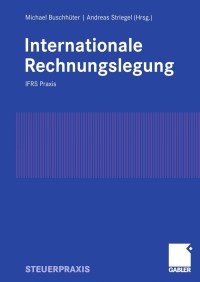Question
The Acme Asia Regional Treasurer seeks to address the companys liquidity struggles, contribute to improving the companys financial position, save costs, and make better use
The Acme Asia Regional Treasurer seeks to address the companys liquidity struggles, contribute to improving the companys financial position, save costs, and make better use of the companys resources.
Identify and validate key challenges, i.e., what are the key areas for Acme Asia to focus on and why?



Despite the drama at headquarters, Acmes fundamental business remained strong with its businesses generating positive net cash flows of $776.3 million and its financial leverage (assets/equity) seemingly healthy at 2.7 at the end of 2006. However, rating agencies, concerned about how the Acme management was managing its debt maturity commitments, had continuously downgraded its bond rating throughout the year. For example, S&P had rated Acmes bonds A in January 2006 but by June 2006, the rating had plummeted to BBB-. Moodys and Fitch went a step further and rated Acmes bonds BB/Ba2, which were considered non-investment grades. Exhibit B shows Acmes credit rating and default spreads throughout 2006.
Acmes 40 legal entities in China were wholly owned by Acme China; these entities covered all major business segments and had collectively opened 170 accounts across 17 banks. This, coupled with Acmes significant and diverse operations throughout the country, made the tracking of commercial and treasury flows difficult, to say the least. Consequently, some entities had idle and excessive funds, while unexpected funding shortfalls gave rise to unnecessary borrowings by other entities. As inefficient use of company resources had resulted in higher banking fees and interest costs, Acmes Regional Treasury turned to banks for solutions by issuingcash management RFP. Acme envisaged setting up a three-tiered
Treasury Advisory Group, Citibank N.A.Page 9liquidity structure involving 1) a header (or concentration) account held by Acme China and managed by Regional Treasury, 2) 5 sub-accounts representing each of Acmes 5 business segments in China, and 3) various operating accounts. Cash from operating accounts within each business segment wouldbe swept daily to their corresponding sub-accounts before further aggregation at the header level. Acmes China management and Regional Treasury teams were to jointly evaluate each banks proposal on 5 major criteria:Global and local relationshipElectronic banking capabilitiesIn-country banking networkExperience in cash managementPricingIn addition to having a cash pool within China, establishing a liquidity structure for Asia would enable Acme to gain further visibility and control on its cash. Given a recent third-party study which showed that in-country cash pooling could reduce operating cash by 30% on average, Acmes Treasury team asked banks to help develop a business case to set up the liquidity structures so the team can convince internal stakeholders in business to co-operate in their implementation. Exhibit I and Appendix 1 detail interest rates and balances with respect to the two cash pools.

Step by Step Solution
There are 3 Steps involved in it
Step: 1

Get Instant Access to Expert-Tailored Solutions
See step-by-step solutions with expert insights and AI powered tools for academic success
Step: 2

Step: 3

Ace Your Homework with AI
Get the answers you need in no time with our AI-driven, step-by-step assistance
Get Started


